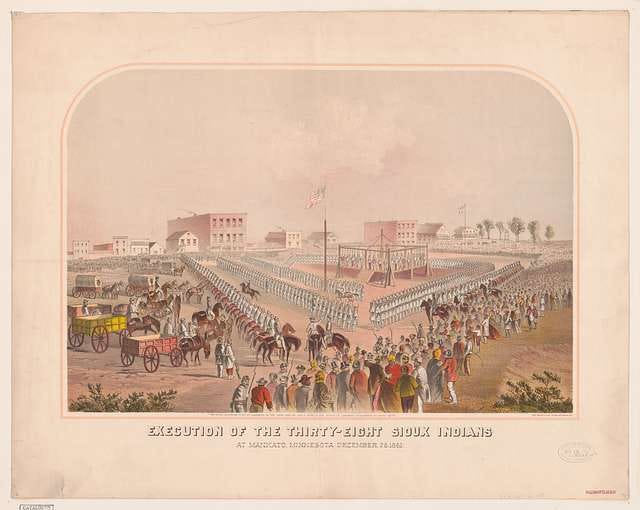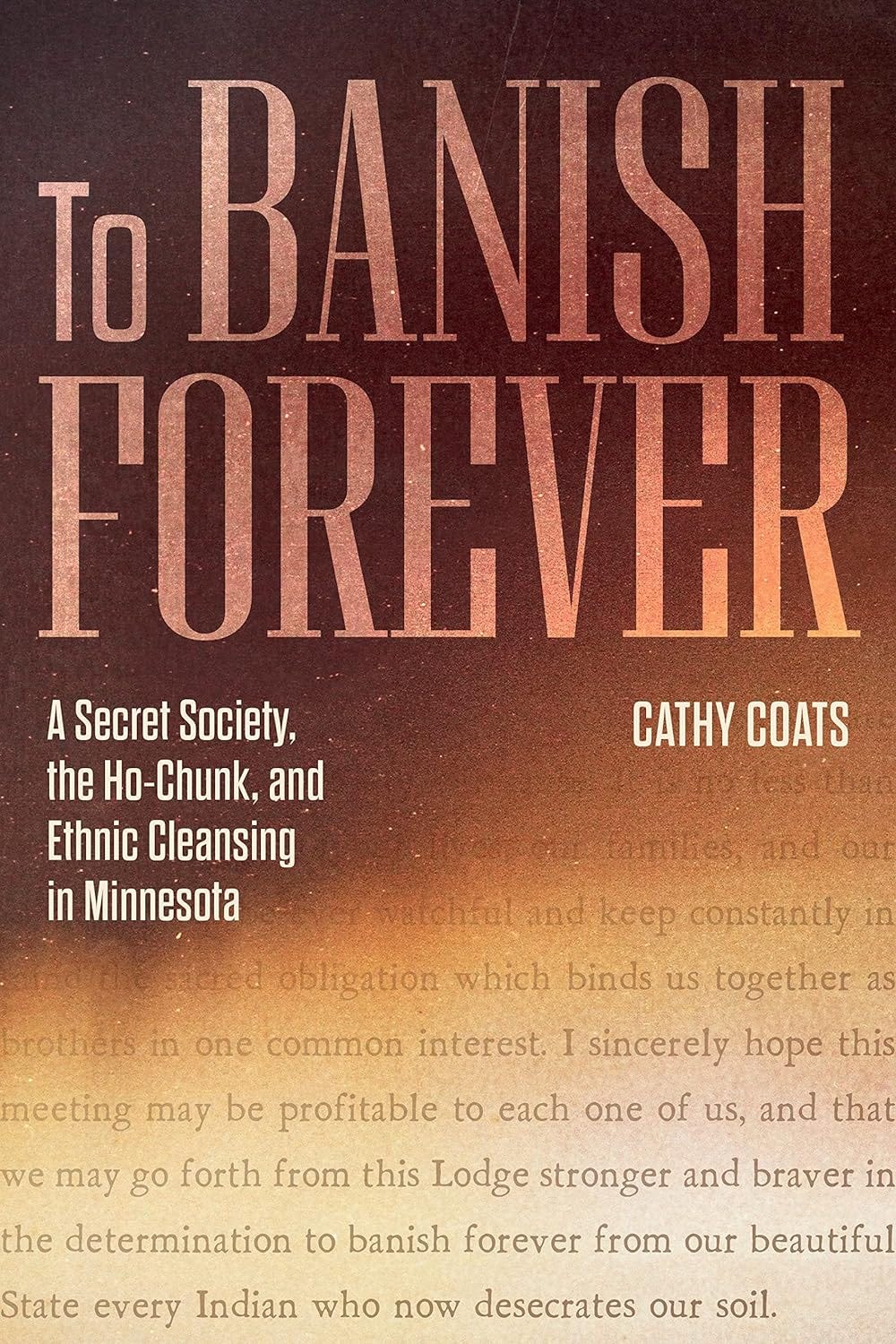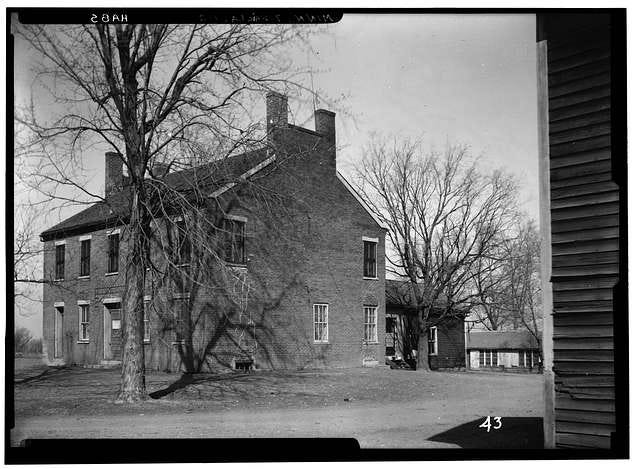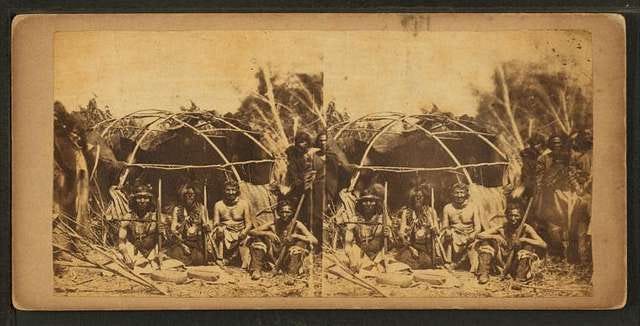A time capsule placed in the cornerstone of Old Main Hall on Mankato State College in June of 1869 contained a four-page pamphlet about Knights of the Forest, a secret society determined “to banish forever from our beautiful State every Indian who now desecrates our soil.”
When the time capsule was opened in 1968, there was no mention of this pamphlet in news accounts. When the buildings on lower campus were sold in 1973, the time capsule was removed and its contents added to the Mankato State College Archives where they sat until 2004. Only then were the original contents itemized online.
Cathy Coats, a great-great-granddaughter of immigrant settlers, is a metadata specialist at the University of Minnesota Libraries and the author of To Banish Forever: A Secret Society, the Ho-Chunk, and Ethnic Cleansing in Minnesota. Her recently released book was brought to my attention in an email from subscriber
who writes about natural history in Minnesota.My first question was why this printed pamphlet, the only one known to exist, detailing initiation rituals and secret oaths, had been included. What had they wanted people to know about the Knights of the Forest? I had to find out more about this secret kept for 161 years.
As soon as I got home from the bookstore, I sat down and read To Banish Forever from cover to cover. There was so much I hadn’t known.
To be honest, I hadn’t known about Ho-Chunk Indians in Minnesota. I thought they were a Wisconsin tribe, though it turns out they have no reservation land. When I was a kid, they were called Winnebago. They officially became Ho-Chunk in 1993 when they passed a new constitution. More than five thousand Ho-Chunk tribal members live in Wisconsin, though they had been invisible to me as a white teenager.
I’m near the north end of Lake Winnebago, the largest lake within the state of Wisconsin. My home is on land the Ho-Chunk shared with the Menominee before 1847 when fur traders established three villages, one now the city of Appleton where I live. Soldiers had pushed the Ho-Chunk from here west across the state to the Mississippi River — at gunpoint on foot — throughout much of the 1830s.
When the Ho-Chunk signed a treaty with the US in 1855, about two-thousand of them were forced to move again, about 150 miles west to reservation land in Blue Earth County, Minnesota.
White settlers there opposed the reservation and protested government confiscation of what they considered their land. This was three years before Minnesota became a state and seven years before settlers could stake a homestead claim. The sheriff in Blue Earth refused to leave his home on the reserved lands, as did other white settlers.
When I realize the sheriff was the law and there was no state government, it shifts the way I think about this time in Midwestern history as the nation moved towards civil war.
White settlers in Blue Earth elected their sheriff to the state’s first legislature in 1857 as a senator. It’s easy to forget that 1857 is the same year as the Dred Scott decision. The Supreme Court upheld slavery when it decided a Black man who lived in Fort Snelling, Minnesota, could not declare himself a free man.
The connections between slavery and treaty violations gnaw at me. It was only a few years ago I discovered by reading Christopher Lehman’s book, Slavery’s Reach: Southern Slaveholders in the North Star State, how many celebrated pioneering leaders in Minnesota had been slave-holders who moved up the Mississippi River with their money from southern plantations at a time when immigrants began to supply cheap labor for their investments in an industrial revolution. I’d been shocked to have been so uneducated about the early founders of the state in which I had been born.
While the national conversations in the fall elections of 1862 primarily focused on the question of slavery, the two political parties in Blue Earth County competed to be the most anti-Indian with their unapologetically white supremacist campaign rhetoric.
On the day after Christmas in 1862, the largest mass lynching occurred when 38 Dakota Indians were hanged before a crowd in Mankato, the county seat of Blue Earth. More than 2,000 Dakota people had been captured and 303 men had been sentenced to die.
Lincoln commuted the sentences for all but 38. He was known to have said he couldn’t afford to hang men for votes.
The Dakota had been punished for rising up in self-defense. Empty promises to deliver food rations and annuity payments had led to famine and death in concentration camp conditions. “Let them eat grass,” Indian Agent Myrick infamously said before the uprising in which almost 500 white settlers were killed.
After the celebrated hangings in Mankato, US military involvement in the war against the Dakota ended. But it would be wrong to suggest the war against Indians was over.

Only weeks after the hangings, in January of 1863, Minnesota Governor Alexander Ramsey issued payment of $25 for every Indian scalp; and bounty orders remained in effect until 1868.
The year the state government lifted the bounty was the year the Knights of the Forest pamphlet went into a time capsule at Mankato State College.
“The Knights of the Forest organized after the Dakota hangings, after the government had already taken most of the Dakota people in Minnesota to a concentration camp at Fort Snelling” (Coats, 2024:4).
Settlers in Blue Earth County had not been pleased by the decisions made by the bigwigs in St. Paul and Washington DC. Who were they to have decided that white settlers in Blue Earth must relocate so their Indian enemies could take the land they had worked so hard to improve upon?
The man responsible for selecting this tract of land was Henry Rice, a fur trader who had worked at Fort Snelling in St. Paul, and would soon become the first Senator from Minnesota in the US Congress. Henry Rice selected Blue Earth for a new reservation for the Ho-Chunk. This land had been ceded in a treaty with the Chippewa in 1847. Rice saw bringing the Wisconsin Indians and their treaty payments into Minnesota made good business sense, especially for his business trading with them.
I can understand the anger of the white settlers who Henry Rice had decided they must give up their homes and livelihood, but leaders directed their anger toward the Winnebago Indians who had not committed any acts of violence against them. Their only crime was being Indian.
Do I think the displacement and dislocation of white settlers in Blue Earth County is the same as the displacement and dislocation of the Winnebago from Wisconsin? No. The Winnebago were driven from their homelands, imprisoned, murdered, and exiled.
When the Ho-Chunk left Blue Earth reservation land in May of 1863, many of them were imprisoned at Fort Snelling in St. Paul.
The secret society disbanded when they achieved their objective of removing the Winnebago from Blue Earth County. And they did so without any public record of their deeds.
Well, almost.
Cathy Coats discovered lots of corroborating evidence for the activities of the Knights of the Forest who were among the most prominent and public men of their day in Blue Earth County. She also includes an appendix of a short history of the secret society published in the Mankato Review, April 27, 1886. It defends the necessity for such a group two decades after its disappearance. Worth noting is the admission the Knights of the Forest organized groups of men whose duty it was to hide in waiting and shoot any Indian who ventured beyond the border.
Contemporaneous secret societies, like the Ku Klux Klan, were secret for a reason — particularly if they were engaged in criminal or immoral behavior and especially if members included officers of the law.
The revelations about this secret society are significant because they go against a dominant version of the story of American history that the military fought wars against the Indians and that’s how the West was won.
The pamphlet revealed a secret: white settlers played a key role in an ongoing war against American Indians.
What remains a mystery is what motivated Mankato leaders in 1869 to include this pamphlet about the Knights of the Forest? Did they think future generations might give their secret society’s war efforts the credit they felt they deserved for banishing Indians from their land? Why would they put it in the cornerstone of a new institution dedicated to the advance of knowledge? Were there truth-tellers in their midst? Did they imagine one day the revelation of this secret would gain the Knights of the Forest redemption or renunciation?








Wow is right. I am sitting here in my comfortable house in Ramsey (!) County, Minnesota, not far from Fort Snelling. Though aware of many of the atrocities committed on “our” soil against Native people, I had no idea of their extent and persistence, or of the racist crimes perpetrated by our own version of the KKK. Just floored by this. I read your article several times, each time more shocked. Thank you again, Jill, for the important work you are doing.
Thank you for shining a light on the Knights of the Forest and the horrifying actions toward the Ho-Chunk. It is only when we know the real history that we can address what we have done on this continent and elsewhere. Ignoring or whitewashing (pun intended) the past does us no favors.